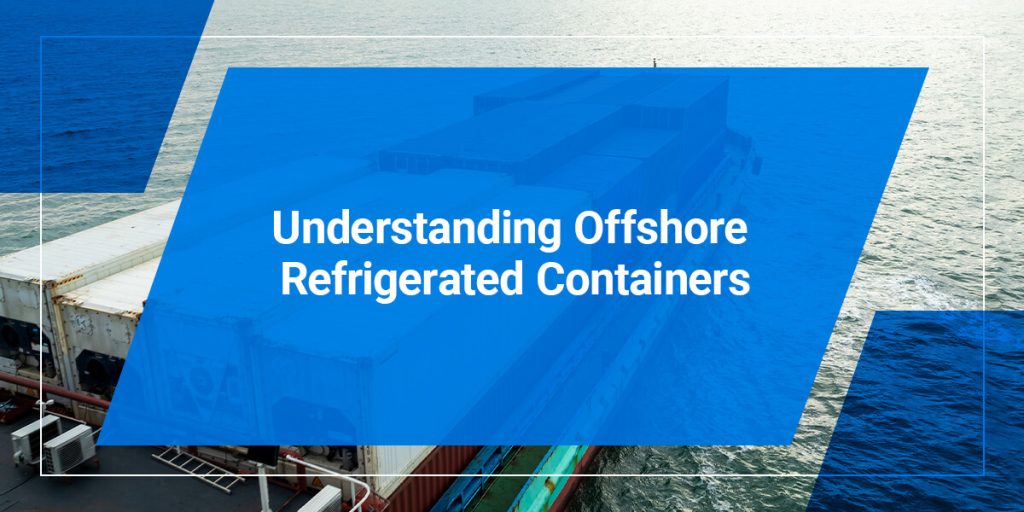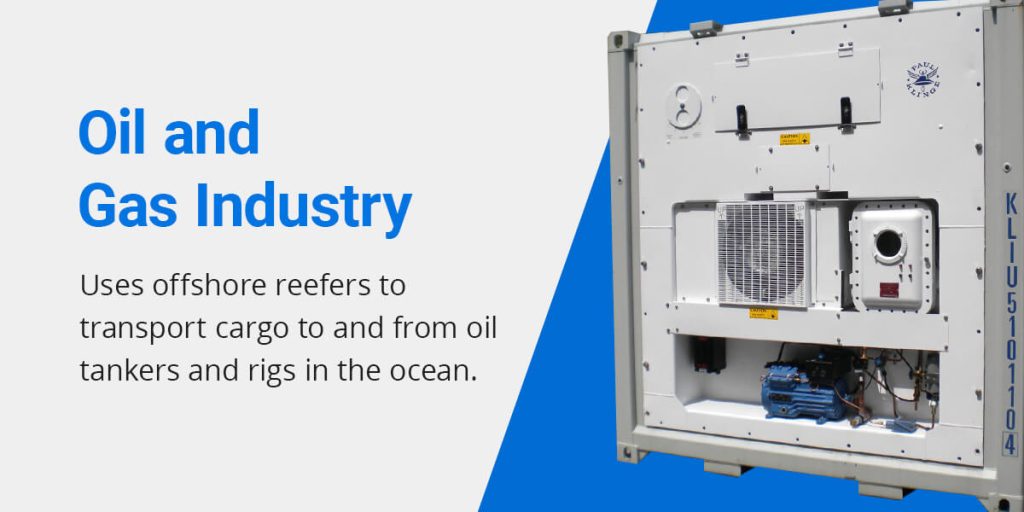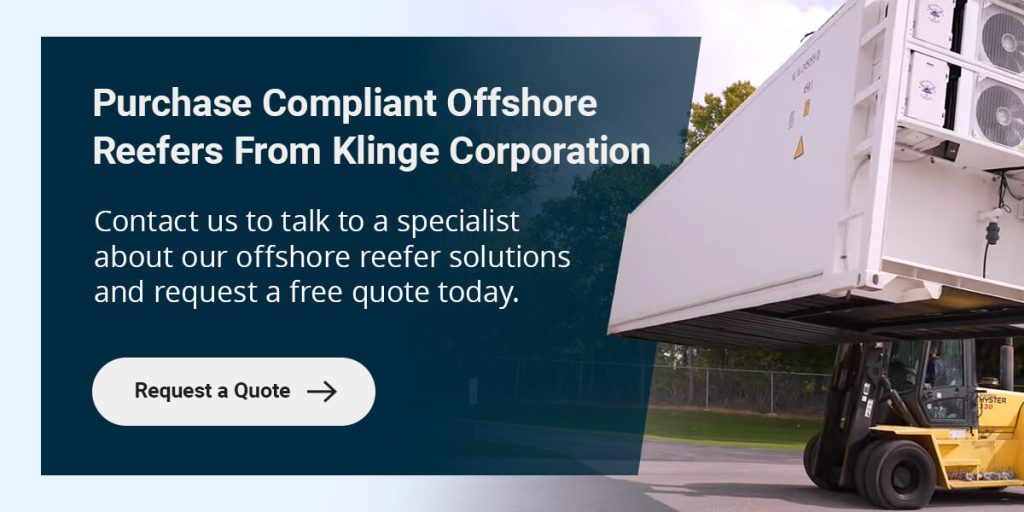The safest solution for transporting products and equipment on open seas is an offshore refrigerated container. These innovative shipping containers keep sensitive goods refrigerated and protected from damaging weather conditions and handling common in offshore locations. This includes oil rigs and tankers, offshore wind farms or floating production storage and offloading vessels (FPSOs).
Learn more about offshore refrigerated containers and their common applications to determine whether they are suitable for your shipping needs.
Table of Contents
- What is an Offshore Refrigerated Container?
- Compliance and Safety Standards
- Applications in Different Industries
- Choosing the Right Offshore Refrigerated Container
- Purchase Compliant Offshore Reefers From Klinge Corporation
What is an Offshore Refrigerated Container?
Offshore refrigerated containers — also known as offshore reefers — contain refrigerated units to keep perishable and hazardous products at the required temperature.
Offshore refrigerated freezers can also store products at temperatures as low as minus 70 degrees Celsius (minus 94 degrees Fahrenheit).
While similar to standard ISO containers, offshore reefers are more rugged and durable. They’re specifically created to withstand harsh sea conditions like storm winds, strong waves and corrosive sea spray. They must be strong enough to handle collisions with offshore structures during lifting.
Compliance and Safety Standards
Offshore reefers must also comply with strict regulations to serve the oil and gas industry, which is known for its harsh operating environments. Container regulations aim to safeguard life and prevent damage to property and the environment at these locations.
The container design and construction must receive Det Norske Veritas (DNV) or other similar certification. Additionally, the refrigerated units on these containers often have to be ATEX Directive compliant to reduce the risk of explosions. Learn more about the two regulations below.
DNV Certification
Det Norske Veritas is a Norwegian classification society that sets international standards for shipping containers. As one of the world’s leading certification bodies, most offshore shipping containers comply with their standards.
Their standard for offshore reefers is DNV 2.7.1, which sets requirements for container design, production and testing. Another similar standard is EN 12079, developed by the European Committee for Standardization.
Choosing containers with DNV 2.7.1 or EN 12079 certification is vital to complying with industry regulations and promoting safe working conditions. These containers have the highest-quality materials and undergo rigorous quality control to ensure safety and reliability.
ATEX Directive
The European Union’s ATEX Directive is a widely accepted standard for protecting equipment in potentially explosive atmospheres where mist, vapors, gases or dust can ignite and combust. It also outlines safety measures to protect workers in ATEX areas.
The ATEX Directive applies to offshore reefers because the attached refrigeration equipment can potentially ignite in an explosive atmosphere. It categorizes explosive environments into zones according to the level of potential danger. For gas, vapor and mist, the zone classifications are as follows:
- Safe Area: An ATEX Safe Area is any area with no explosion risk.
- Zone 0: An area where an explosive atmosphere occurs continuously.
- Zone 1: An area where an explosive atmosphere is likely to occur occasionally.
- Zone 2: An area where an explosive atmosphere is unlikely or may only happen for a short period.
Applications in Different Industries
Various industries need these containers to transport their goods over rough seas. Explore the uses across different sectors below.
Oil and Gas Industry
The most common application for offshore reefers is in the oil and gas industry, which uses offshore reefers to transport cargo to and from oil tankers and rigs in the ocean.
Workers on these offshore stations need food and medicine, which they must store at specific temperatures to remain safe for consumption. Offshore oil rigs also need temperature-sensitive chemicals for various processes, which they transport and store in offshore reefers.
Food and Beverage Industry
The food and beverage industry is one of the biggest consumers of reefers. Reefers keep food at a consistent, cool temperature to prevent spoilage and comply with food safety regulations.
Catering and service companies use offshore reefers to transport their products to people who work on offshore oil rigs or Floating Production Storage and Offloading (FPSO) vessels . The durable construction of these containers ensures the temperature remains consistent in open seas.
Choosing the Right Offshore Refrigerated Container
When choosing a container for your application, consider the following:
- Hazardous zones: Offshore reefers have specific classifications for which zone they can operate in. Consider the ATEX zones of your loading, offloading and storage locations to choose a suitable container and remain compliant with industry standards.
- Maintenance and parts: Choosing a local supplier is crucial to address your shipping needs. However, you should also assess the manufacturer’s regions for spare parts and equipment service. If the container breaks in an unsupported area, your company may have to delay shipment and pay extra costs to transport it to a service center.
- Global regulations: While globally recognized regulatory bodies like ATEX and DNV exist, countries can have additional regulations for offshore reefers. Knowing what these are for every part of the shipping route will help you choose a compliant container and avoid fines, shipment delays and legal consequences.
- Environmental impact: To reduce your company’s environmental impact, invest in offshore refers that use eco-friendly materials. For example, you can find containers with sustainable insulation or refrigerants.
Purchase Compliant Offshore Reefers From Klinge Corporation
Klinge Corporation is a leading offshore refrigerated container manufacturer. Our mission is to provide ultra-reliable cold chain solutions for the chemical, oil and gas, military, food and pharmaceutical industries.
Founded in 1984, we have over 40 years of experience manufacturing specialized containers for clients looking for standard reefer alternatives. Our offshore, explosion-proof reefers include:
- Model PFR-571 Z2: The PFR-571 Z2 is an explosion-proof reefer unit for ISO and DNV containers. It is rated for EN 60079-10 Zone 2 hazardous locations and ATEX Directive Group II, Category 3 equipment.
- Standard (Safe Zone) Offshore Reefer: Standard reefer unit for ISO and DNV containers.
Through innovation and research, we provide the latest refrigeration technology to protect your cargo. We also repair and service Klinge reefers to ensure they perform at the highest standard. Klinge Corporation has ISO 9001:2015 certification, and our offshore containers comply with the ATEX Directive and DNV 2.7-1.
Contact us to talk to a specialist about our offshore reefer solutions and request a free quote today. Our qualified team can assist you with choosing the right container for your needs.



